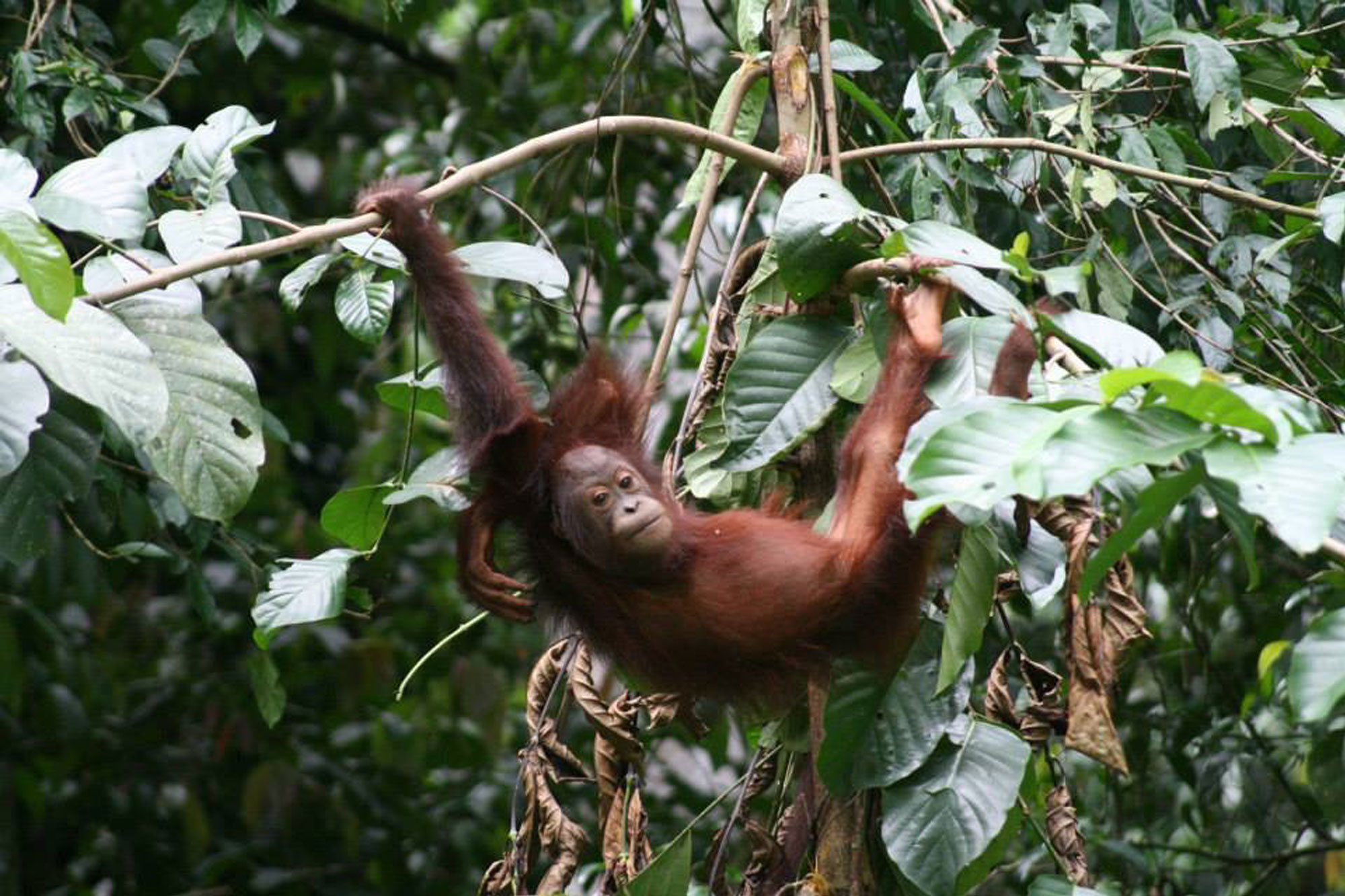Palm oil production continues to be a hot topic in conservation and orang-utans have become its poster child. Whilst it is true that converting forest to oil palm has a negative effect on orang-utan populations, it is also true that, to some degree, we rely heavily on palm oil. It is in the food we eat, the soaps we wash with and even the fuels we fill our cars with and, for the foreseeable future at least, palm oil is here to stay. With this in mind, conservationists in Southeast Asia are increasingly focusing their attention on oil palm landscapes in an effort to minimise the negative effects and increase its sustainability.
Orang-utans are commonly observed in oil palm estates and it is now widely recognised that orang-utans are using these modified landscapes. However, there are few published estimates of orang‐utan densities from oil palm plantations. To start to fill this gap in our knowledge, a research team led by David Seaman, a PhD student at the Durrell Institute of Conservation and Ecology (DICE), surveyed and produced density estimates of the Bornean orang‐utan (Pongo pygmaeus morio) across a gradient of disturbed habitats from continuous logged forest to remnant forest patches in oil palm plantations in Sabah, Malaysian Borneo. They found that orang‐utans were present in remnant forest patches in oil palm plantations, but at significantly lower densities of 0.82 individuals per km2, compared to continuous logged forest of 2.32 individuals per km2.
As expected, the study found that forest conversion to oil palm negatively effects orang-utan populations, leading to a reduction in both orang-utan density and the amount of available habitat. Despite this, orang‐utans can persist, at least in the short‐term, in oil palm estates providing remnant forest patches. The research highlights the role that oil palm landscapes can have in supporting orang‐utan populations and urges for human‐modified landscapes to be better incorporated into orang-utan conservation strategies.
Densities of Bornean orang‐utans (Pongo pygmaeus morio) in heavily degraded forest and oil palm plantations in Sabah, Borneo by David J.I. Seaman, Henry Bernard, Marc Ancrenaz, David Coomes, Thomas Swinfield, David T. Milodowski, Tatyana Humle and Matthew J. Struebig has been published in the American Journal of Primatology.

